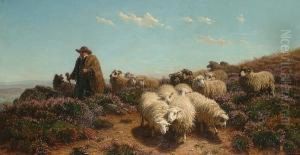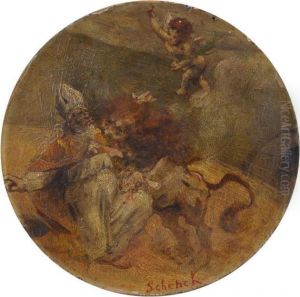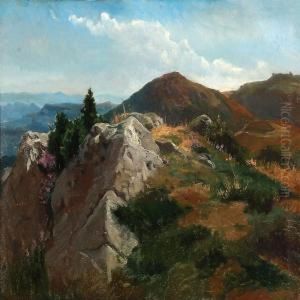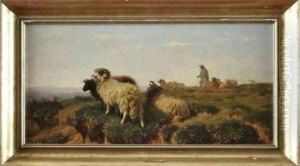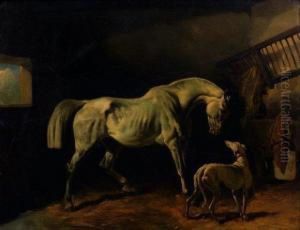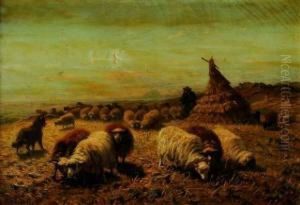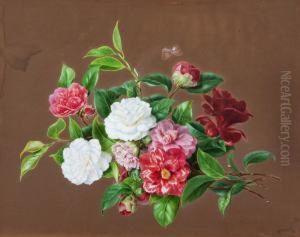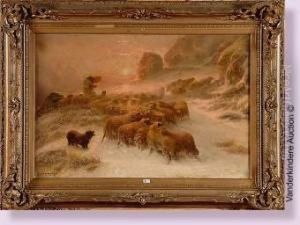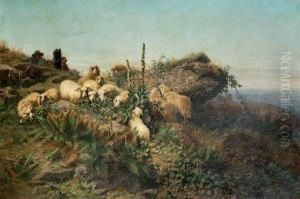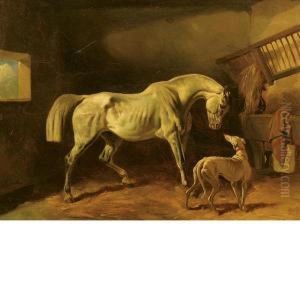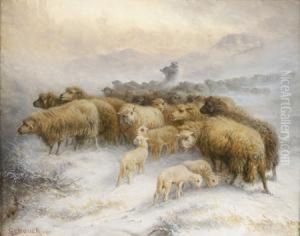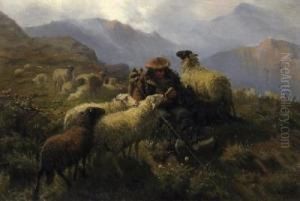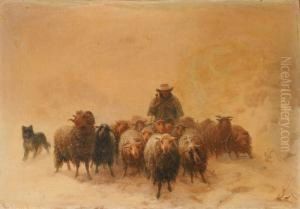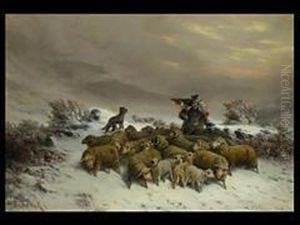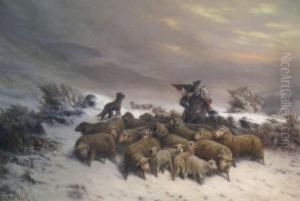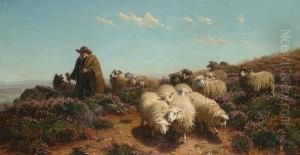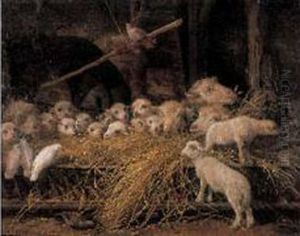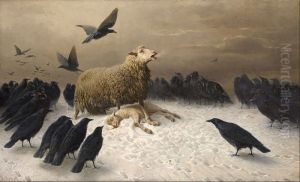August Friedrich Schenck Paintings
August Friedrich Albrecht Schenck was a German-born painter who gained most of his acclaim and success in France. Born in Glückstadt, Denmark, in 1828, Schenck's early life and initial education details remain somewhat obscure, reflecting the scant documentation typical of many artists of the era. However, it is known that his passion for art led him to Paris, the then epicenter of the artistic world, where he would eventually settle and develop his career.
Schenck is best known for his emotional landscapes and scenes involving animals, often depicting them in harsh, unforgiving environments. These works are characterized by a profound sense of empathy towards the animal subjects, a theme that resonated with the romantic and sometimes melancholic spirit prevalent in the art of his time. One of his most famous paintings, 'Anguish', shows a ewe mourning the death of her lamb amidst a snowy landscape, a powerful representation of maternal grief and despair. This painting, in particular, illustrates Schenck's remarkable ability to evoke emotion and empathy through his art.
Throughout his career, Schenck exhibited at the Paris Salon, the official art exhibition of the Académie des Beaux-Arts in Paris. His works received considerable acclaim in France and abroad, contributing to his reputation as a significant figure in 19th-century art. Despite his success, detailed records of Schenck's personal life and relationships are limited, which is not uncommon for artists of his period.
Schenck's influence extended beyond his immediate circle, inspiring other artists to explore themes of nature and animal life with a similar sense of emotional depth and realism. His approach to depicting the natural world and its inhabitants in a manner that underscored their vulnerability and suffering reflects broader artistic and societal preoccupations of the time, including the growing interest in animal rights and the human relationship with nature.
August Friedrich Schenck died in 1901, leaving behind a legacy that, while perhaps not as widely recognized today as some of his contemporaries, remains an important part of the 19th-century European art historical narrative. His works continue to be appreciated for their emotional power and technical proficiency, and they hold a special place in collections that focus on romantic and animal-themed art.
